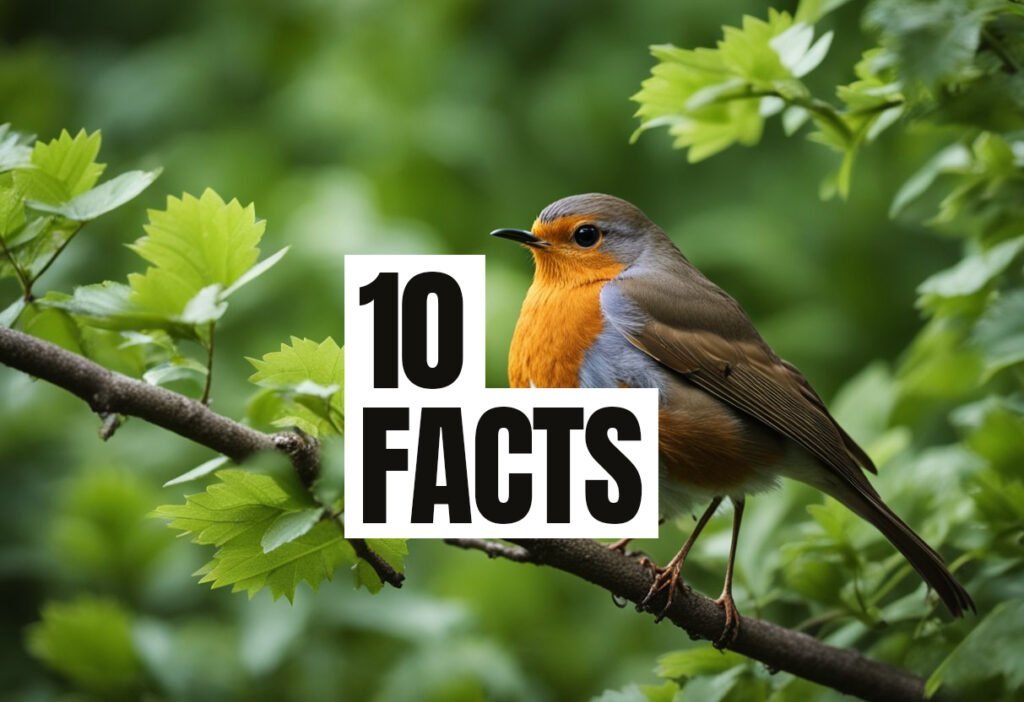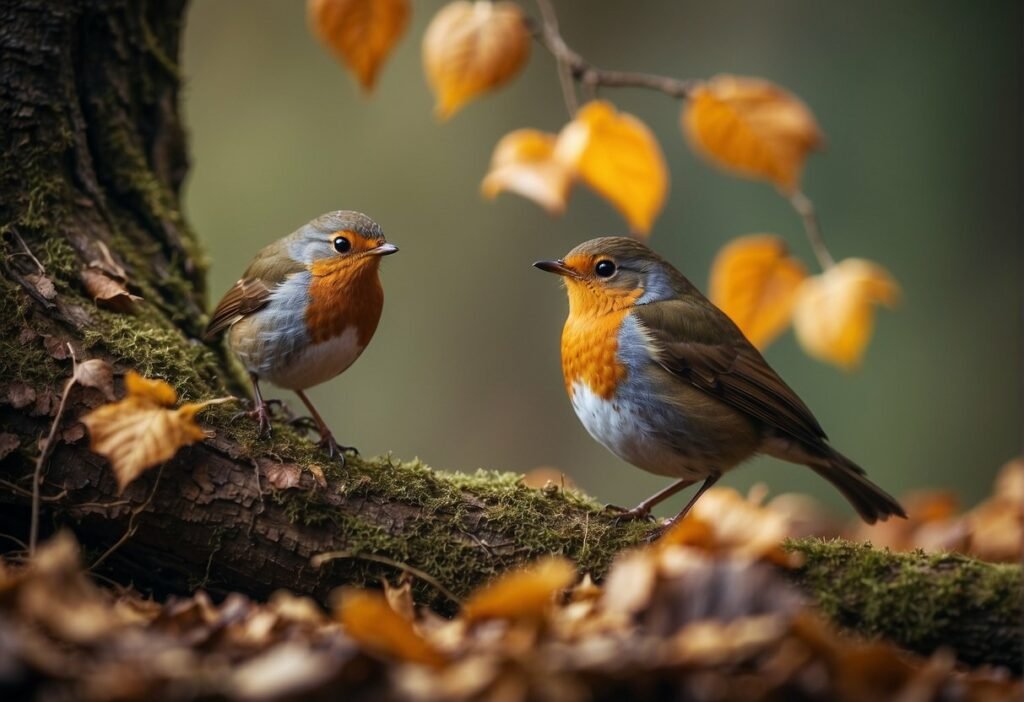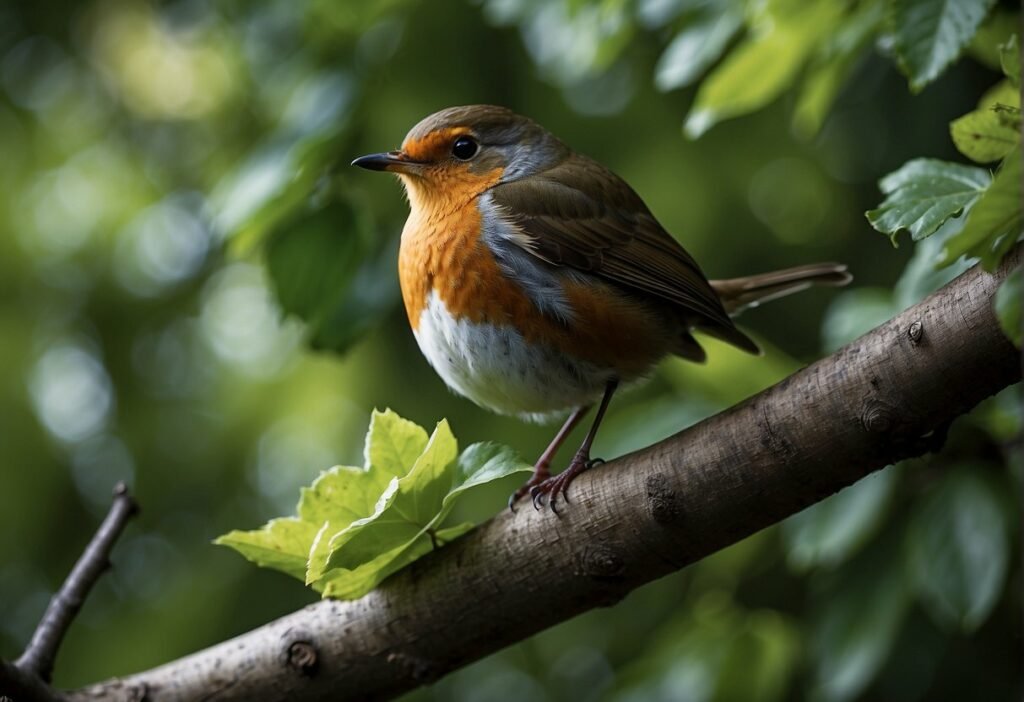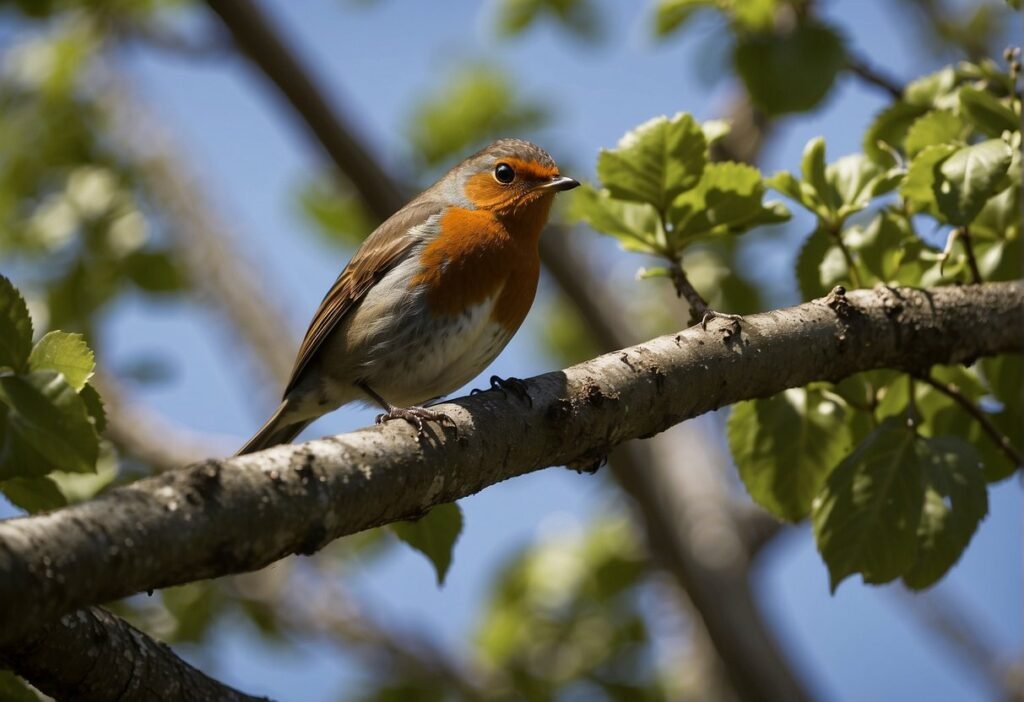Robins are a common sight in many backyards and parks across North America. These birds are known for their distinctive orange-red breast, cheerful chirping, and their habit of building nests in trees, shrubs, and even on man-made structures. But where exactly do robins nest, and what factors influence their choice of nesting site?

Robins are known for their adaptability when it comes to nesting sites. They are not picky about the type of tree or shrub they use, and can even build their nests on man-made structures such as window ledges, porch lights, and even car mirrors. However, there are certain factors that robins take into consideration when choosing a nesting site. These include the availability of food and water, the presence of predators, and the amount of sunlight and shade in the area.
Despite their adaptability, robins tend to prefer certain types of nesting sites over others. For example, they often choose trees and shrubs that are close to a source of water, such as a pond or stream. They also prefer sites that are sheltered from the wind and have plenty of nearby vegetation for cover. Additionally, robins tend to avoid areas with high levels of human activity, such as busy roads or construction sites, as these can be dangerous for both the birds and their young.
Nesting Habits and Habitat
Robins are known for their beautiful songs and bright orange-red breast feathers. They are also known for their unique nesting habits and habitat. In this section, we will explore the preferred nesting locations, nest building process, and nesting materials and structure of robins.
Preferred Nesting Locations
Female robins are responsible for selecting the nesting location. They prefer to build their nests in trees, shrubs, and on the ground. Trees and shrubs provide a secure and protected environment for the nest, while the ground provides a flat and open area for the nest.
Robins have also been known to build their nests on ledges, in gardens, and in hedges. They prefer to build their nests in areas that are concealed and provide good camouflage.
Nest Building Process
Nest building is the responsibility of the female robin. She will construct the nest using a combination of materials such as twigs, mud, grass, and branches. The nest-building process usually takes around two weeks to complete.
The foundation of the nest is made from twigs and other materials, which are held together with mud. Once the foundation is complete, the female robin will shape the nest and add additional materials to provide insulation and support.
Nesting Materials and Structure
The nest structure is cup-shaped and has a diameter of around 6-8 inches. The inside of the nest is lined with soft materials such as grass and feathers, which provide insulation and comfort for the eggs and chicks.
The nest is built to provide good camouflage and protection from predators. The materials used to build the nest are carefully selected to blend in with the surrounding environment.
In conclusion, robins have unique nesting habits and habitat. They prefer to build their nests in trees, shrubs, and on the ground. The nest-building process is the responsibility of the female robin and takes around two weeks to complete. The nest structure is cup-shaped and has a diameter of around 6-8 inches. Materials such as twigs, mud, grass, and branches are used to build the nest and provide insulation and support.
Reproduction and Lifecycle
Robins are monogamous birds, meaning they mate with one partner for the entire breeding season. Mating typically occurs in early spring, with the male robin attracting a female with his song and bright plumage. Once a pair has formed, they will establish a territory and begin building a nest.
Mating and Egg Laying
The female robin will lay a clutch of 3-5 eggs, which are typically blue-green in color. She will incubate the eggs for around two weeks, while the male brings her food. Once the eggs hatch, both parents will feed and care for the nestlings.
Incubation and Hatching
The incubation period lasts around 12-14 days, with the female robin sitting on the eggs to keep them warm. The eggs will hatch in the order they were laid, with the first chick emerging a day or two before the others.
Growth and Fledging
The baby robins, or nestlings, will grow quickly and require a lot of food. The parents will feed them insects, worms, and berries, and will make frequent trips back and forth from the nest. After around two weeks, the nestlings will start to develop feathers and become more active. This is known as the fledging period, and the young birds will leave the nest around 2 weeks after hatching.
Overall, robins have a relatively short breeding season, usually lasting from March to July. During this time, they will build multiple nests and raise several broods. While they face threats from predators such as cats and squirrels, robins are adaptable birds and can thrive in a variety of habitats.
Frequently Asked Questions
What materials do robins use to build their nests?
Robins typically use a variety of materials to build their nests, including grass, twigs, leaves, and mud. They often line their nests with softer materials like moss, hair, and feathers.
How can you identify a robin’s nest among others?
Robins’ nests are often cup-shaped and made of a combination of materials like grass, twigs, and mud. They are typically found in trees, shrubs, or on man-made structures like porch lights. The nests may also have a distinctive blue-green color due to the presence of robin’s eggs.
In which season do robins typically lay their eggs?
Robins usually lay their eggs in the spring, between March and July. The exact timing can vary depending on the location and climate.
Do robins reuse their nests each year or build new ones?
Robins may reuse their nests from the previous year if they are still in good condition. However, they may also build new nests if the old ones are damaged or unsuitable.
What strategies do robins employ to protect their nests from predators?
Robins may use a variety of strategies to protect their nests from predators, including building their nests in hard-to-reach locations, camouflaging the nest with surrounding materials, and aggressively defending the nest against potential threats.
Is it common for robins to nest close to human dwellings, and why might they do so?
Yes, it is common for robins to nest close to human dwellings. They may do so because the structures provide protection from predators and access to food sources like gardens and bird feeders. However, it is important to give robins space and avoid disturbing their nests.




